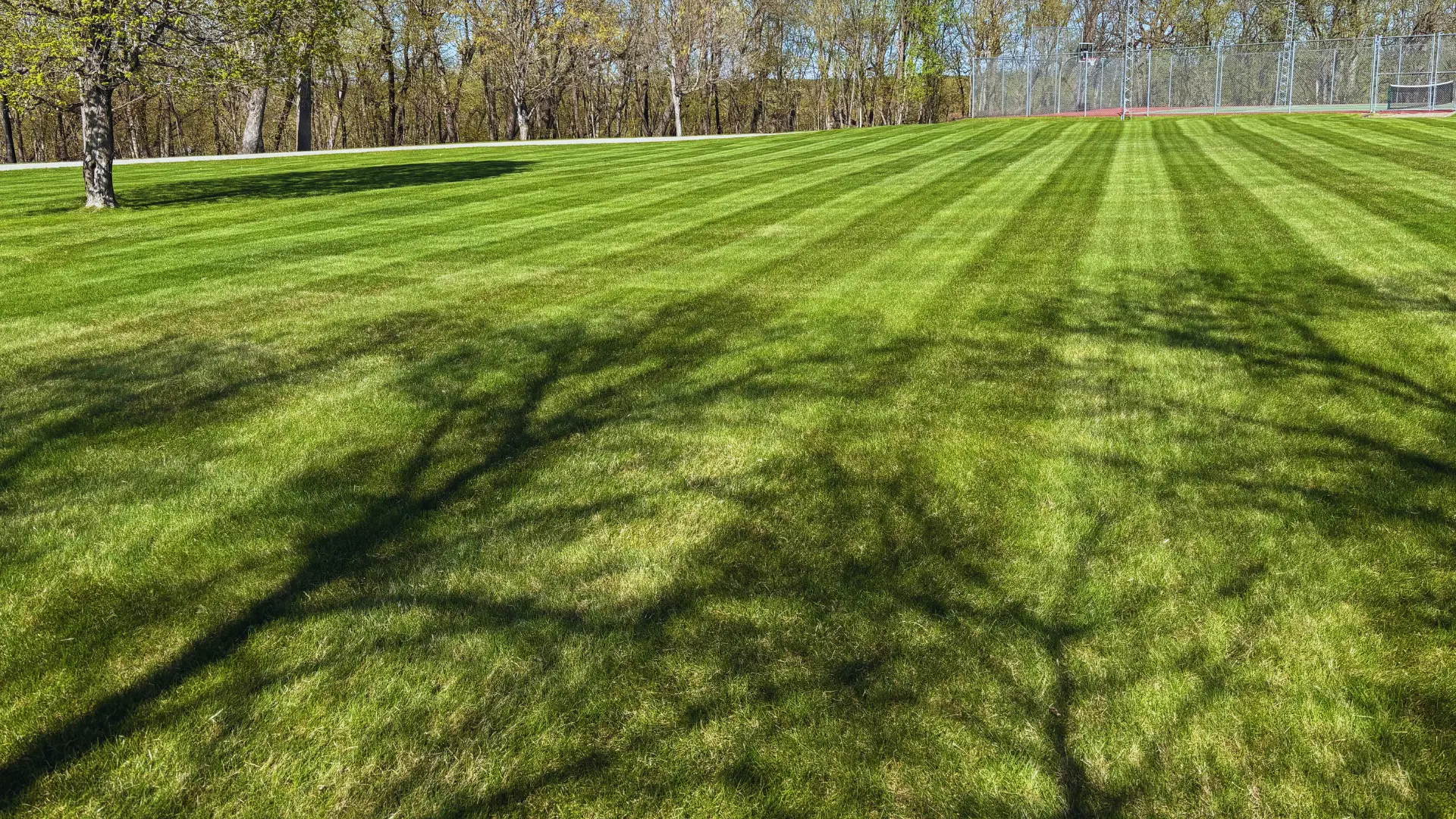That lush, green lawn is more than just grass; it’s the backdrop for family barbecues, a playground for your kids and pets, and a point of pride for any homeowner. But when mysterious brown patches appear and the turf feels spongy underfoot, it’s easy to feel frustrated. You’ve been watering and mowing correctly, so what’s going on?
The culprit may be a silent invader hiding just beneath the surface: GRUBS.
Here at Miller Yard Care, we believe a healthy lawn starts with understanding what’s happening both above and below the soil. This guide will help you identify if you have a grub problem and explain how we can partner with you to restore the health and beauty of your lawn.
What Exactly Are Grubs?
Drawing from research by experts at the University of Minnesota Extension and Iowa State University, we know that grubs are not a specific type of insect. They are the C-shaped, milky-white larvae of various beetles, most commonly Japanese beetles, May/June beetles, and chafers in our region. These larvae feast on the root systems of your grass, cutting it off from the water and nutrients it needs to survive.
Telltale Signs: How to Identify a Grub Problem
Before you can solve the problem, you need to be sure you have one. Here are the key signs our professional technicians look for, and that you can spot yourself:
1. Spongy Turf: Does your lawn feel soft and spongy when you walk on it? This is often the first sign. The damage to the roots causes the turf to lose its stability.
2. Irregular Brown Patches: You may notice scattered, irregularly shaped brown patches that won’t turn green, even with regular watering. This is a classic symptom of root damage.
3. Increased Animal Visitors: According to the University of Wisconsin Extension, a sudden increase in activity from raccoons, skunks, or flocks of birds digging in your lawn is a major red flag. They are feasting on the grubs beneath the surface, causing further damage as they dig.
4. The Tug Test: If you suspect a grub problem, find a damaged area and grab a handful of the grass. If it peels back easily, like a loose piece of carpet, check the soil just beneath. This lack of resistance means the roots have been severed.
How Many Grubs Are Too Many?
Finding one or two grubs isn't a cause for panic. A healthy lawn can tolerate a small population. Based on guidance from the North Dakota State University Extension, a problem exists when you find more than 5 to 10 grubs per square foot. If you perform the "tug test" and see a writhing handful of larvae, you have an infestation that requires action.
When to Call in the Experts: Your Solution is a Phone Call Away
So, you’ve identified a grub problem. You might be tempted to run to the big-box store, but grub control is a science, and timing is everything. This is where we step in to take the burden off your shoulders.
Why trust Miller Yard Care with your lawn?
We Understand the Grub Life Cycle: The most effective time to treat for grubs is in late summer or early fall when the new larvae are small, young, and feeding near the surface. Spring treatments are often less effective as the grubs are larger and more resilient. Attempting to treat at the wrong time wastes money and won't solve the problem. We apply the right treatment at the right time for maximum impact.
Professional-Grade Products: We use proven, professional-grade control products that are more effective and longer-lasting than many consumer options. Our licensed technicians are trained in the precise and safe application needed to protect your family, pets, and the environment.
Guaranteed Results: Don’t spend your weekends guessing. Our comprehensive grub control program is designed not only to eliminate the current infestation but also to prevent future generations from taking hold. We take the guesswork out of it and guarantee a healthier, more resilient lawn.
Your beautiful lawn is an investment. Don't let hidden invaders destroy it from below. If you've noticed the telltale signs of grub damage, let the experts at Miller Yard Care solve your problems for you!
Contact us today for a no-obligation lawn evaluation. We’ll diagnose the problem, develop a customized treatment plan, and give you back the lush, healthy lawn you deserve.


Comments (0)
Sorry! The comments have been closed.